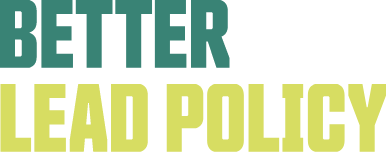About

Earthjustice is here because the earth needs a good lawyer.
About Earthjustice
The 130+ staff at the nonprofit public interest environmental law organization wield the power of law and the strength of partnership to protect people’s health, to preserve magnificent places and wildlife, to advance clean energy, and to combat climate change.
Earthjustice is committed to combating childhood lead poisoning, particularly in communities hardest hit by lead exposure—low-income communities and communities of color.
View EarthjusticeAbout the author of these materials
Jill Witkowski Heaps, Project Attorney, Toxic Exposure & Health Program
Jill has spent more than a decade as an environmental lawyer, directing Vermont Law School’s environmental law clinic and serving as Deputy Director of the Tulane Environmental Law Clinic in New Orleans. Jill was Legal Director and Waterkeeper at San Diego Coastkeeper and directed the Choose Clean Water Coalition, a coalition of more than 230 groups working together for clean water in the Chesapeake Bay watershed. Jill most recently served as Assistant Director of the Environmental Advocacy Clinic at the University at Buffalo Law School. Jill is a nationally-recognized leader in environmental justice and environmental law and policy. She recently completed a six-year term on the National Environmental Justice Advisory Council, where she served as vice-chair for three years and was lead author on several key recommendations, including on water infrastructure and water affordability. Jill clerked for the Honorable Virginia Hernandez Covington for the U.S. District Court in the Middle District of Florida and started her career at Skadden Arps in New York City. She holds an undergraduate degree in political science, environmental science, and peace studies from the University of Notre Dame and she graduated from Washington University School of Law order of the coif.
How did we create this tool?
We started our research with an initial assessment of the status of lead poisoning programs—both successful and struggling—in 25 communities across the country. We discovered that the information on how to tackle our lead problems is out there, but is often shared in lengthy technical papers or highlighted in local media. We created this tool to share these recommendations from experts and the lived experience of the communities in a way that is accessible to all community advocates. The information on the website provides lessons learned from four dozen communities across the country.

